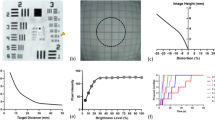Abstract
Several methodologies are typically employed to extract chronically-implanted pacing leads including: laser catheter systems, radio frequency catheters, mechanical cutting catheters, and/or direct traction. In the present study, Visible Heart® methodologies were employed to obtain novel internal and external views of such extractions. Utilizing standard cardioplegia procedures, canine hearts (n = 3) with chronically-implanted endocardial pacing leads were explanted to a unique isolated heart apparatus. Modified Krebs–Henseleit buffer allowed for clear endocardial imaging with endoscopic video cameras inserted into the cardiac chambers. Leads were extracted using: (1) laser system with sheath; (2) dissection sheath with incorporated bipolar tungsten electrode; (3) non-powered mechanical sheath; or (4) direct traction. Resultant images provide a novel perspective regarding lead extraction methodologies and the imposed force on an encapsulated lead and on the great vessels and/or heart itself; this understanding may improve the outcome and safety of future lead extractions.



Similar content being viewed by others
References
Love, C., & Smith, M. C. (2006). Extraction of pacing leads: overview of current techniques. Journal of Cardiovascular Electrophysiology, 17(11), 1257–1261.
Byrd, C. L., Wilkoff, B. L., Love, C. J., Sellers, T. D., & Reiser, C. (2002). Clinical study of the laser sheath for lead extraction: the total experience in the United States. Pacing and Clinical Electrophysiology, 25(5), 804–808.
Epstein, L. M., Byrd, C. L., Wilkoff, B. L., Love, C. J., Sellers, T. D., Hayes, D. L., et al. (1999). Initial experience with larger laser sheaths for the removal of transvenous pacemaker and implantable defibrillator leads. Circulation, 100(5), 516–525.
Love, C. J. (2007). Lead extraction. Heart Rhythm, 4(9), 1238–1243.
Langendorff, O. (1895). Untersuchungen am uberlebenden Saugenthierherzen. Investigations on the surviving mammalian heart. Pflugers Archiv fur die Gesamte Physiologie des Menschen und der Tiere, 61, 291–332.
Chinchoy, E., Soule, C. L., Houlton, A. J., Gallagher, W. J., Hjelle, M. A., Laske, T. G., et al. (2000). Isolated four-chamber working swine heart model. The Annals of Thoracic Surgery, 70(5), 1607–1614.
Acknowledgements
The authors would like to thank the Visible Heart® staff for assistance with this study, Dr. Nicholas Skadsberg for his comments, and Monica Mahre for her help in preparation of this manuscript. We would also like to thank Cook Vascular and Spectranetics for their support of this project and for providing the extraction tools used to remove the leads. This work was funded in part by Medtronic, Inc. and the Institute for Engineering in Medicine at the University of Minnesota.
Author information
Authors and Affiliations
Corresponding author
Electronic supplementary material
Below is the link to the electronic supplementary material.
This clip was recorded from within the right ventricle. The laser sheath can be seen burning through the fibrosed encapsulation which surrounds the lead body in order to advance toward the implant site. The blue, strobe-like flashing occurs when the laser is in use (MPG 7.12 MB).
Recorded from within the right atrium, the radio frequency sheath can be seen cutting through the fibrosed encapsulation surrounding the lead body. The sheath is rotated around the perimeter of the lead in order to free the lead from the heart wall. The rhythmic, orange flashes of light occur when the device is firing (MPG 11.4 MB).
This video image was recorded from within the right atrium. The dilator sheath is completely covering the lead at its implant site in the right atrial wall. The sheath is twisted until the lead is freed and removed from the endocardial surface. Near the end of the clip, another lead, implanted in the right atrial appendage, can be seen in the background (MPG 4.30 MB).
This movie demonstrates the direct traction method of removing a lead from the heart wall, as recorded from within the right atrium. The helix of the lead can be seen “pulling” at the encapsulation surrounding it. Also seen in this clip, just distal to the lead, is an encapsulation from a previous extraction (MPG 4.42 MB).
This clip, recorded from within the right atrium, illustrates the level of encapsulation that is left behind on the endocardial surface (in this example, specifically, on the crista terminalis) following a lead extraction procedure (MPG 2.96 MB).
Rights and permissions
About this article
Cite this article
Love, C.J., Ahlberg, S.E., Hiniduma-Lokuge, P. et al. Novel visualization of intracardiac pacing lead extractions: methodologies performed within isolated canine hearts. J Interv Card Electrophysiol 24, 27–31 (2009). https://doi.org/10.1007/s10840-008-9306-2
Received:
Accepted:
Published:
Issue Date:
DOI: https://doi.org/10.1007/s10840-008-9306-2




